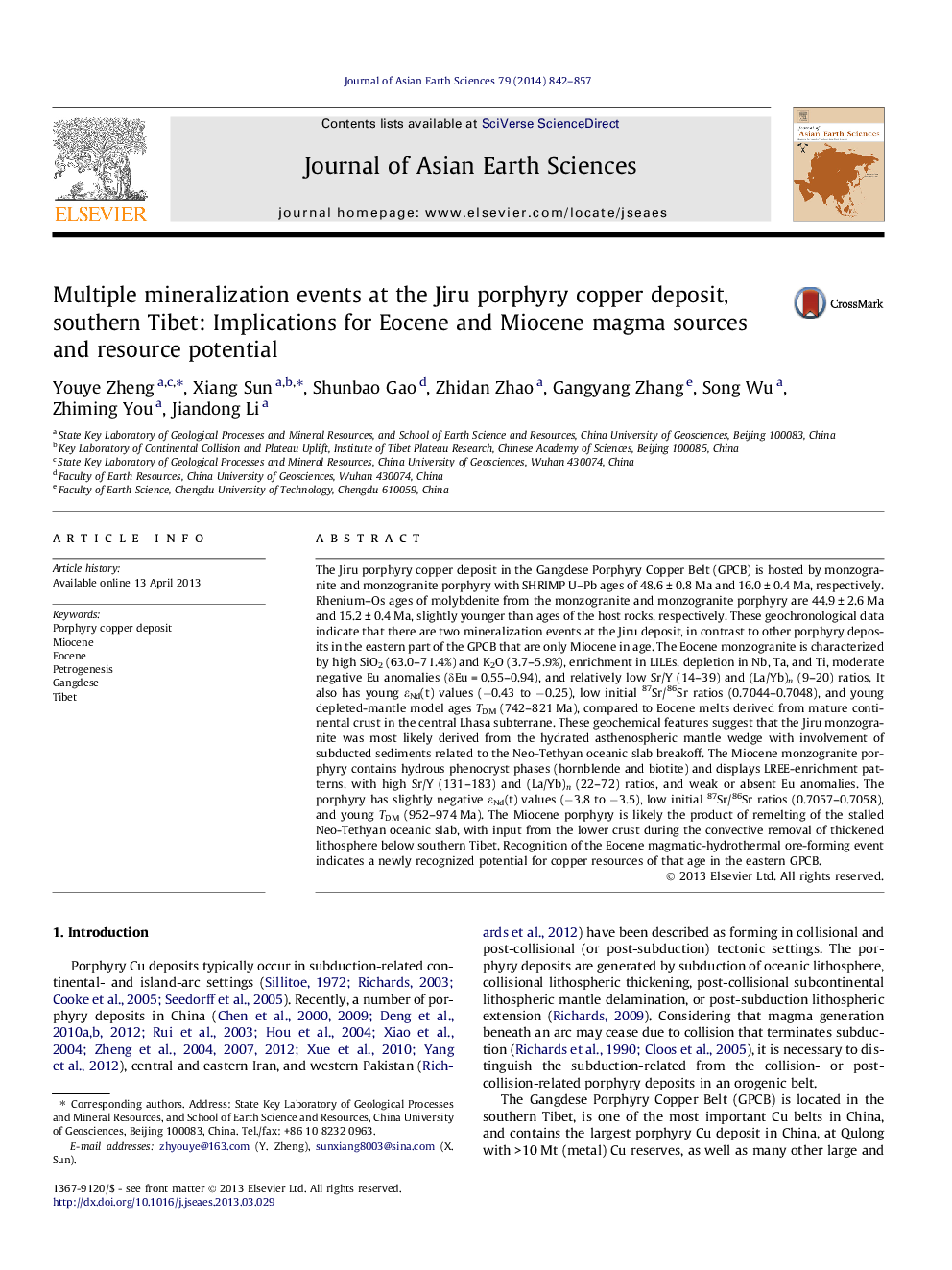| کد مقاله | کد نشریه | سال انتشار | مقاله انگلیسی | نسخه تمام متن |
|---|---|---|---|---|
| 4730876 | 1356784 | 2014 | 16 صفحه PDF | دانلود رایگان |
• The Jiru porphyry copper deposit was formed by two magmatic-hydrothermal events.
• Early event was caused by 48.6 Ma monzogranite formed in syncollision setting.
• Late event resulted from 16 Ma monzogranite porphyry in postcollisional setting.
The Jiru porphyry copper deposit in the Gangdese Porphyry Copper Belt (GPCB) is hosted by monzogranite and monzogranite porphyry with SHRIMP U–Pb ages of 48.6 ± 0.8 Ma and 16.0 ± 0.4 Ma, respectively. Rhenium–Os ages of molybdenite from the monzogranite and monzogranite porphyry are 44.9 ± 2.6 Ma and 15.2 ± 0.4 Ma, slightly younger than ages of the host rocks, respectively. These geochronological data indicate that there are two mineralization events at the Jiru deposit, in contrast to other porphyry deposits in the eastern part of the GPCB that are only Miocene in age. The Eocene monzogranite is characterized by high SiO2 (63.0–71.4%) and K2O (3.7–5.9%), enrichment in LILEs, depletion in Nb, Ta, and Ti, moderate negative Eu anomalies (δEu = 0.55–0.94), and relatively low Sr/Y (14–39) and (La/Yb)n (9–20) ratios. It also has young εNd(t) values (−0.43 to −0.25), low initial 87Sr/86Sr ratios (0.7044–0.7048), and young depleted-mantle model ages TDM (742–821 Ma), compared to Eocene melts derived from mature continental crust in the central Lhasa subterrane. These geochemical features suggest that the Jiru monzogranite was most likely derived from the hydrated asthenospheric mantle wedge with involvement of subducted sediments related to the Neo-Tethyan oceanic slab breakoff. The Miocene monzogranite porphyry contains hydrous phenocryst phases (hornblende and biotite) and displays LREE-enrichment patterns, with high Sr/Y (131–183) and (La/Yb)n (22–72) ratios, and weak or absent Eu anomalies. The porphyry has slightly negative εNd(t) values (−3.8 to −3.5), low initial 87Sr/86Sr ratios (0.7057–0.7058), and young TDM (952–974 Ma). The Miocene porphyry is likely the product of remelting of the stalled Neo-Tethyan oceanic slab, with input from the lower crust during the convective removal of thickened lithosphere below southern Tibet. Recognition of the Eocene magmatic-hydrothermal ore-forming event indicates a newly recognized potential for copper resources of that age in the eastern GPCB.
Journal: Journal of Asian Earth Sciences - Volume 79, Part B, 5 January 2014, Pages 842–857
